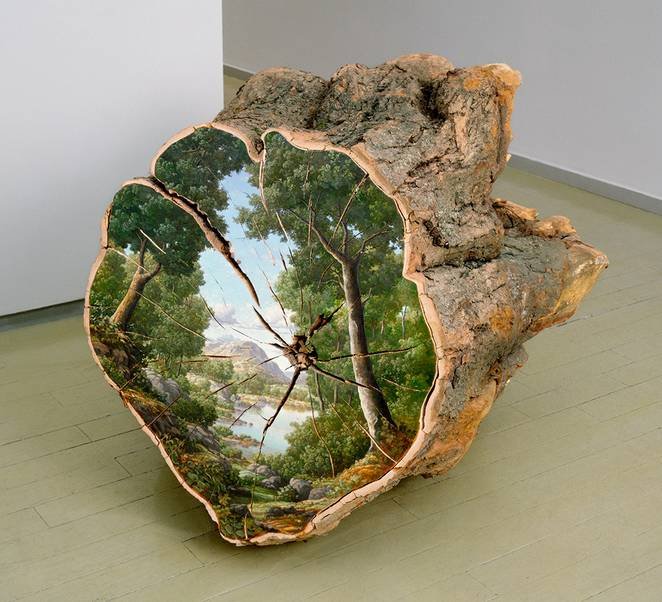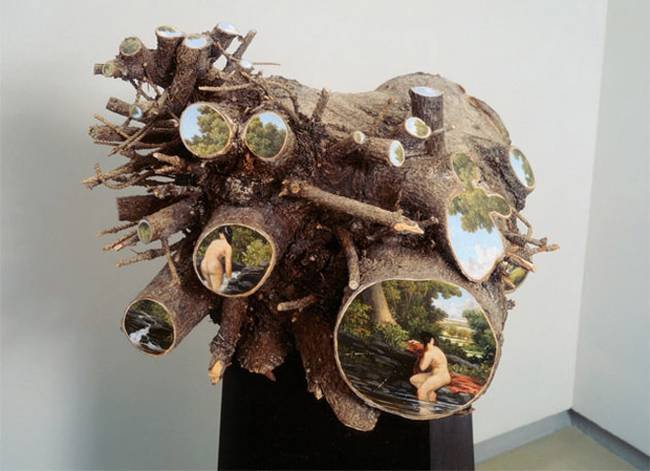
© Alison Moritsugu
Art, by its expressive nature and use of symbols that can be interpreted in one way or another, can be a political act that influences the viewer into internalizing a certain ideology. So it was with American landscape paintings of the 18th and 19th centuries, which depicted bucolic sceneries of the New World that seemed like an empty Eden, perfect for colonization. But as we know, in reality the so-called New World was already populated by the indigenous peoples of this continent, and the gradual takeover of ancestral lands, large-scale disenfranchisement of millions and the negative environmental impact of colonization is something that these soft, pastoral paintings of the era conveniently overlook or romanticize.Hawaii-born, New York City based artist Alison Moritsugu challenges these constructs in a series of landscape images that allude to these pastoral paintings of the past, yet have been painted on cut cross-sections of raw wood. She says:



© Alison MoritsuguMoritsugu's brush skillfully recalls the aesthetic style of these landscape painters of yore, yet simultaneously hints at a kind of historical greenwashing of America's colonial past. There is a deliberate, jarring contrast between the idealized, painted vision of nature and the viciously sliced section of tree it sits upon, prompting us to question the motives behind these images -- past and present -- that many of us so eagerly consume. Moritsugu explains:
Painters throughout art history from the Northern Song, Baroque, Rococo and Hudson River School tailored their depictions of nature to serve an artistic narrative. Today, photoshopped images of verdant forests and unspoiled beaches invite us to vacation and sightsee, providing a false sense of assurance that the wilderness will always exist. By exploring idealized views of nature, my work acknowledges our more complex and precarious relationship with the environment.


Beautifully painted and yet encapsulating a serious message, these sliced logs present a fractured, romanticized reflection of what was once whole, living and real, telling us that we would do well to learn from the past enough to not repeat it. More over atAlison Moritsugu.